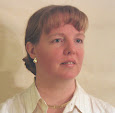 For those of you reasonably familiar with my fairly wordy style of writing… Hmm. That doesn’t do it. It’s usually good to learn new things, and recently I was made aware that… No, I don’t think that’s it either. OK. Here goes. I’m practicing being less wordy!
For those of you reasonably familiar with my fairly wordy style of writing… Hmm. That doesn’t do it. It’s usually good to learn new things, and recently I was made aware that… No, I don’t think that’s it either. OK. Here goes. I’m practicing being less wordy! That was hard! My philosophy has always been “write it down, then edit to 50% of the size.” While editing is still good, I don’t have the bandwidth for that much rewriting, so I’m trying something new. This blog will still be a space for observations and rants, but my goal is to practice getting to the point quickly. Maybe in time it will become a habit! So here goes.
Recently I learned about OpenClinica, a free open-source clinical trials software system from Akaza Research. It apparently has been used in many trials by government, academia and in the industry. They join a growing trend of organizations no longer willing to accept industry’s rules (excuses?) of high costs and selective pipelines where treatments are developed only if they match a marketing strategy. Organizations like OneWorld Health, founded by Victoria Hale (one of my very few heros), a non-profit drug company that develops treatments for third world diseases. Or like the Parkinson’s Disease Society, that funds research to the tune of £4M per year.
Granted, these organizations have an advantage. They often receive their compounds from companies that have found them and don’t want to develop them, so much of the cost and risk of the initial research is mitigated. They generally don’t have shareholders demanding high profits. But they also don’t expect 7, 8 or 9 figure salaries, and it seems that their primary goal is treat patients, whereas much of industry seems to regard that as second to profits and personal wealth.
Most of us want to do the right thing, though, and one way is reconsider what we keep confidential and what we share. No, not chemical formulae or marketing strategies! I’m talking about clinical trials processes. How we develop our protocols, and SAPs, and CRFs. How we recruit our subject, monitor our data, resolve our queries. What we query. How we pass data between functional areas. There are efficient and inefficient ways to do these things, and we’ve been reinventing them for 20 years as new companies start and existing companies reorganize. It’s time for everyone to be open about how they do these things, and let the best approaches bubble to the top. And don’t tell me this is part of competitive advantage – no one out there is getting drugs to market dramatically faster than anyone else!!! Here’s a radical concept – let’s compete on the merits of the treatment or device itself!
Photo: St. Johns Wort, Auckland Botanical Gardens, Auckland, New Zealand. c. 2008, Kit Howard.

No comments:
Post a Comment